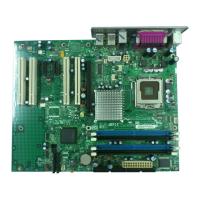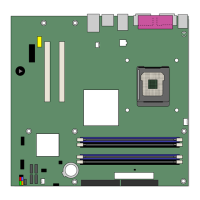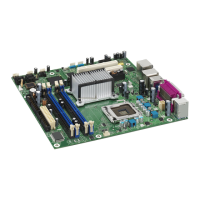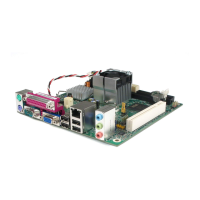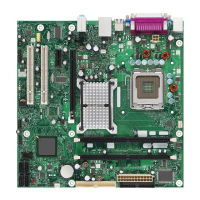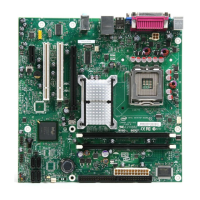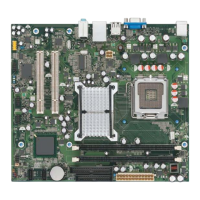Intel Desktop Board D915GLVG Technical Product Specification
70
Table 36 lists the BIOS Setup program menu features.
Table 36. BIOS Setup Program Menu Bar
Maintenance Main Advanced Security Power Boot Exit
Clears
passwords and
displays
processor
information
Displays
processor
and memory
configuration
Configures
advanced
features
available
through the
chipset
Sets
passwords
and security
features
Configures
power
management
features and
power supply
controls
Selects boot
options
Saves or
discards
changes to
Setup
program
options
Table 37 lists the function keys available for menu screens.
Table 37. BIOS Setup Program Function Keys
BIOS Setup Program Function Key Description
<←> or <→>
Selects a different menu screen (Moves the cursor left or right)
<↑> or <↓>
Selects an item (Moves the cursor up or down)
<Tab> Selects a field (Not implemented)
<Enter> Executes command or selects the submenu
<F9> Load the default configuration values for the current menu
<F10> Save the current values and exits the BIOS Setup program
<Esc> Exits the menu
3.2 BIOS Flash Memory Organization
The Firmware Hub (FWH) includes a 4 Mbit (512 KB) symmetrical flash memory device.
3.3 Resource Configuration
3.3.1 PCI Autoconfiguration
The BIOS can automatically configure PCI devices. PCI devices may be onboard or add-in cards.
Autoconfiguration lets a user insert or remove PCI cards without having to configure the system.
When a user turns on the system after adding a PCI card, the BIOS automatically configures
interrupts, the I/O space, and other system resources. Any interrupts set to Available in Setup are
considered to be available for use by the add-in card.
3.3.2 PCI IDE Support
If you select Auto in the BIOS Setup program, the BIOS automatically sets up the
PCI IDE connector with independent I/O channel support. The IDE interface supports hard drives
up to ATA-66/100 and recognizes any ATAPI compliant devices, including CD-ROM drives, tape
drives, and Ultra DMA drives. The BIOS determines the capabilities of each drive and configures
them to optimize capacity and performance. To take advantage of the high capacities typically
available today, hard drives are automatically configured for Logical Block Addressing (LBA) and
